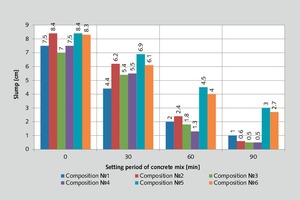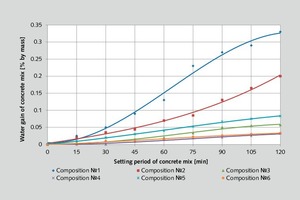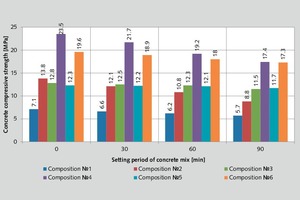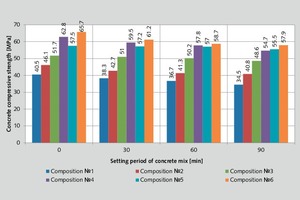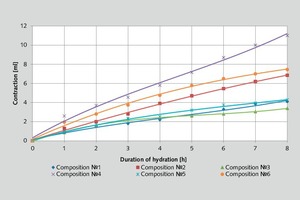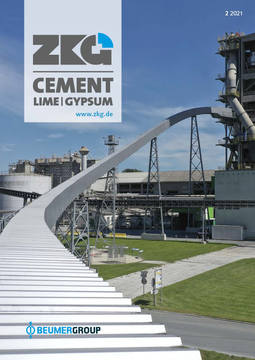REFERENCES
[1] Pimenov, S.I.: Features of the structure formation of a cement stone after hydro-mechanochemical activation of cement, Scientific journal of building and architecture (2019), No. 2 (54), pp. 77-88
[2] Pimenov, S.I. Features of the structure formation of cement stone after hydro-mechanochemical activation of cement, Russian Journal of Building Construction and Architecture (2019), No. 3 (43), pp. 46-58
[3] Kuznecova, T.V.: High-early cement development at A.V. Volzhenskii studies, Construction materials (2000), No. 2,
pp.20-21
pp.20-21
[4] Mukhametrakhimov, R.Kh.: Influence of active mineral additives on the basic properties of the gypsum cementpozzolan binder for the manufacture of building products, in: Galautdinov, A.R., Lukmanova, L.V.: Matec Web of Conferences (2017), No. 106, pp. 1-9
[5] Kaprielov, S.S.: Influence of organomineral modifying agent MB-50 on structure and deformability of cement stone and high-strength concrete, in: Karpenko, N.I., SHejnfel‘d, A.V., Kuznecov, E.N.: Concrete and reinforced concrete (2003), No. 3, pp. 2-7
[6] Herman Camilo Pedrosa: Hydration of Portland cement accelerated by C-S-H seeds at different temperatures, in: Oscar Mendoza Reales, Victória Dias Reis, Maria das Dores Paiva, Eduardo Moraes Rego Fairbairn, Cement and Concrete Research. Volume 129, (2020), article 105978
[7] Mukhametrakhimov, R.Kh.: Mechanoactivated gypsum cement puzzolan binder based on modified low-grade raw material, in: Galautdinov, A.R.: Izvestiya Kazanskogo gosudarstvennogo arhitekturno-stroitel‘nogo universiteta (2018), No. 1 (43), pp. 187-195
[8] Gusev, B.V.:Nanopatterning of concrete materials, Industrial and civil construction, (2016), No. 1, pp. 7-10
[9] Ida Balczár, Tamás Korim, Hanna Hullár, Adrienn Boros, Éva Makó: Manufacture of air-cooled slag-based alkali-activated cements using mechanochemical activation, Construction and Building Materials. Volume 137.15 (2017), pp. 216-223
[10] Izotov, V.S.: The way of gypsum cement puzzolan binder compounding, in: Mukhametrakhimov, R.Kh., Galautdinov, A.R., Invention RU 2551176 C1, 20.05.2015, application form No. 2014114814/03, 14.04.2014
[11] Izotov, V.S.: The way of gypsum cement puzzolan mix compounding, in: Mukhametrakhimov, R.Kh., Galautdinov, A.R., Invention RU 2550630 C1, 10.05.2015, application form No. 2014114813/03, 14.04.2014
[12] Selyaev, V.P.: Analysis of mechanoactivation influence on properties of cement mixes with polyfunctional admixtures, in: Nizina, T.A., Balbalin, A. V., Vestnik Volzhskogo regional‘nogo otdeleniya Rossijskoj akademii arhitektury i stroitel‘nyh nauk (2014), No. 17, pp. 203-208
[13] Afanas’ev, D.A.: Increase of pozzolanic activity of cement by ways of spin chemistry, in: Sarkisov, YU.S., Gorlenko, N.P., SHepelenko, T.S., Cvetkov, N.A., Zubkova, O.A., Shevchenko, M.YU., Fundamental‘nye issledovaniya (2017), No. 7, pp. 15-19
[14] Izotov, V.S.: Chemical additives for concrete modification, in: Sokolova, YU. A. (Publisher): Paleotip, KSUAE, 206, 244p.
[15] Galautdinov, A. R.: Set-retarding plasticizers for improving the effectiveness of gypsum-cement-pozzolan binders, in: Mukhametrakhimov R. Kh., ZKG International (2018), No. 11, pp. 52-57
[16] Yamada, S:. Working mechanism of poly-beta-naphthalene sulfonate and polycarboxylate superplasticizers types from point of cement paste characteristics, in: Ogawa, S. Hanahara, ACI SP-145 (2000), pp.367-382
[17] K. Yamada: Effects of the chemical structure on the properties of polycarboxylate-type super-plasticizer, in: O. Takahashi,
S. Hanehara, M. Matsuhhisa, Cement and Concrete Research (2000), No. 30 (2), pp. 197-207
S. Hanehara, M. Matsuhhisa, Cement and Concrete Research (2000), No. 30 (2), pp. 197-207
[18] Tarasov, V.N.: Assessment of feasibility of polycarboxylate superplasticizers for concrete making, in: Gusev, B. V., Petrunin, S.YU., Korotkova, N.P., Garnovesov, A.P., Vestnik nauki i obrazovaniya Severo-Zapada Rossii (2018), V. 4, No. 1,
pp. 29-40
pp. 29-40
[19] Dobshic, L.M.: Influence of polycarboxylate superplasticizers on structure formation of cement paste, in: Kononova, O.V., Anisimov, S.N., Leshkanov, A.YU., Fundamental‘nye issledovaniya (2014), No. 5, pp. 945-948

